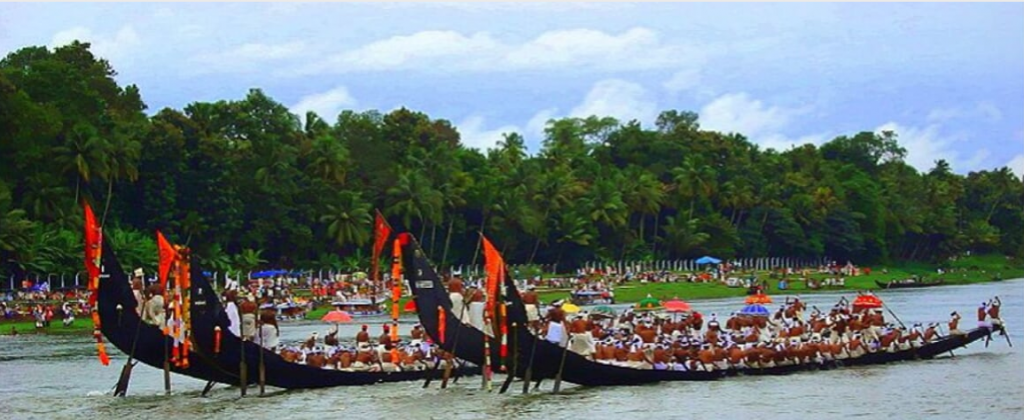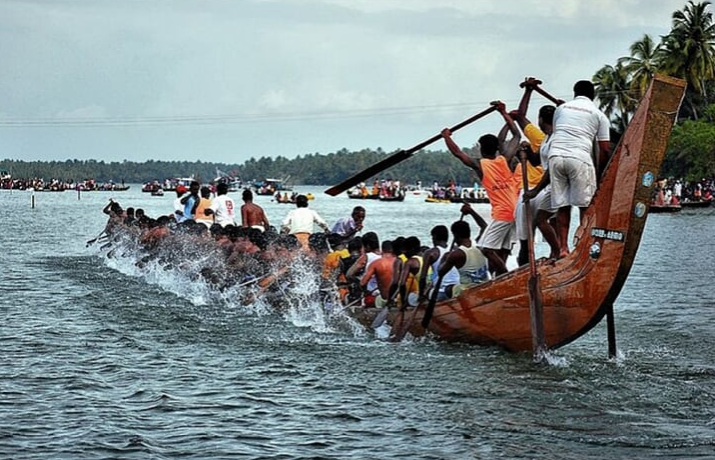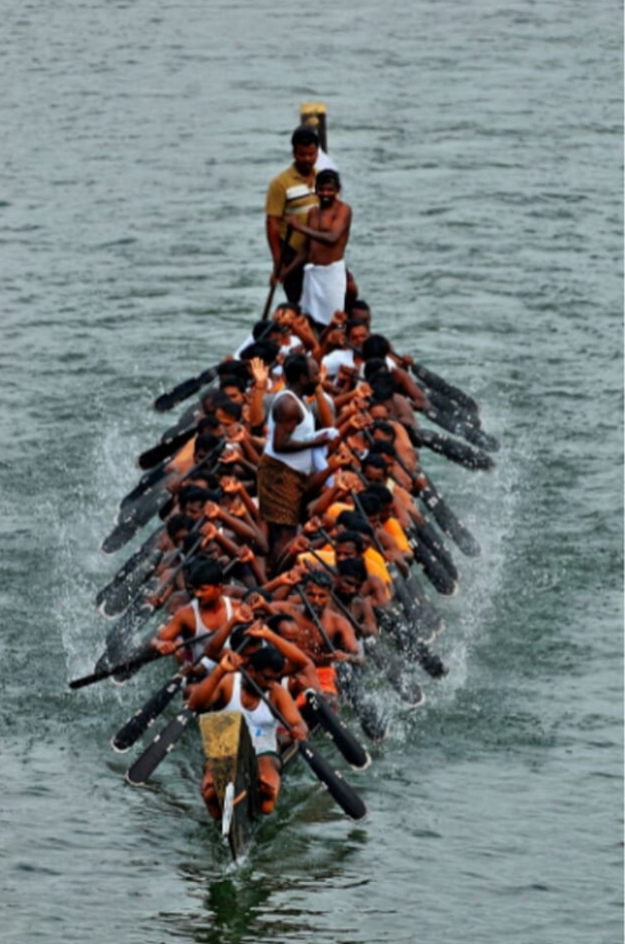The ferocity of your collective spirit pulses throughout your vessel with enough force to make Karthikeya, the Hindi god of war tremble in his boots. The beating of the fire platform pulses your through veins to every appendage of your body. Driving your paddle in perfect unison with your 127 teammates, propelling you boat forward and faster to the finish line. The pride of your village rides on your boat, they need this, they need a good harvest this year.
Chundan Vallam, also known as snake boat racing is intertwined into community and culture of the backwater state of Kerala, India. With teams usually consisting over 100 people, oftentimes 150 people, this is considered as the world’s biggest team sport. Common with most paddling sports, the timing of the stroke is at upmost importance as it only takes one person’s lag to to put out the timing of the whole boat, given the massive teams, all of whom must have perfect timing, this challenge is multiplied by every paddler and drummer being off the mark.

History and culture
Chundan Vallam originated in the 14th century during a war between feudal kingdoms and the kingdom Chembakasseri wasn’t doing too well in this war. So King Devanarayan of Chembakasseri consulted the ancient texts of Sthapathya Veda, a form of traditional architecture linking people to the buildings which they occupy, and thus the King came up with the idea of Chundan Vallam. These massive canoes were designed to hold over 100 paddler-warriors and hold cannons. The ancient design of these boats has survived the centuries as they are still built to the same blueprint over 700 years ago. Overtime, the main use of the boats has moved away from the traditional naval warfare purposes to more of a cultural event, and they no longer carry cannons. Today Chundan Vallam tradition has strong religious and spiritual significance and the boats are often worshipped like deities. To this day, all people on board must be barefoot, and only men are allowed to touch the boat.
Basic Rules
There are several sizes of boat, and there are often teams of over 100 people. The majority of teammates are paddlers, starting off in single file at the narrow bow of the boat, then double file near the front and the stern. The paddlers in the middle are separated by the central fire platform, which would hold a cannon during battle. Today, a couple men stand on the fire platform, beating it with poles, and surrounded by others singing the Vanchippattu, traditional folk songs about paddling, life and the gods. The beat of the poles and rhythm of the Vanchippattu keep the paddlers in time, while it is at the tail where the bot keeps going in the right direction. The boats are commandeered by a chief, who occupies the highest position on the tail, flanked by a team of Amarackars (helmsmen) who steer the boat to victory.

How to Experience Chundan Vallam
Snake boats are very local to Kerala, and it is unlikely to find this sport anywhere else. The main snake boat season is at the start of the Onam harvest in Autumn and the most famous race being the Nehru Trophy, named after India’s first Prime Minister, on the second Saturday of August in Punnamada.
If you would like a taste of paddling a bit closer to home, the most similar widespread sport is dragon boat racing, which has 20 paddlers in the standard size boat. With clubs throughout Asia, and most of the developed world, this is the most accessible form of long boat paddling.


3 thoughts on “Chundan Vallam”
Hello so happy to read about Chundan Vallom 🙂 … I am from Kerala so this is very nostalgic … Thanks for bringing it on from that little part of the world …
Thanks Rohini. I just hope I did the sport justice 🙂
Found it , Now I remember the blog 🙂